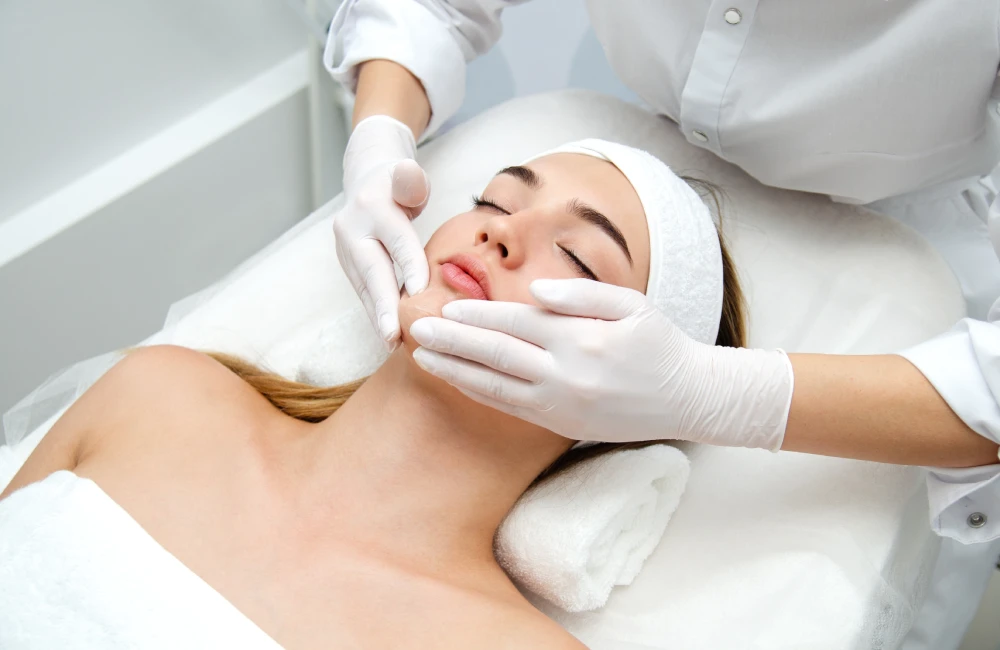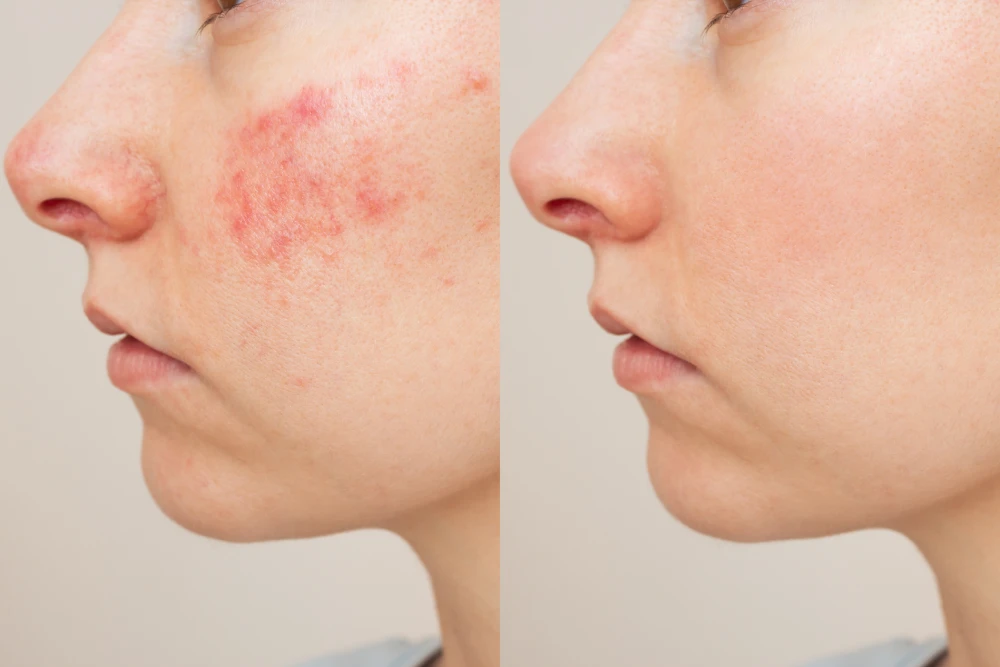There’s something no one really tells you about acne—it’s not just a surface issue. It can shape the way you move through the world, how you feel in your skin, and even how you connect with others. And while makeup and filters can temporarily soften the appearance, true healing starts when you go deeper—right down to the pores.
That’s where an acne facial becomes a powerful ally. Designed to detoxify, purify, and rebalance troubled skin, these targeted treatments do more than clear up breakouts—they offer clarity, calm, and confidence. Think of them as a reset button for your complexion.
But here’s the secret many patients overlook: what you do after your facial is just as important as the treatment itself.
Post-care can make or break your results. So before you dive back into your regular skincare (or bad habits), read this guide all the way through. We’re uncovering the top post-facial mistakes to avoid—so your glow lasts and your skin actually heals.
What Is Acne?
Acne is a chronic inflammatory skin condition that occurs when hair follicles become clogged with oil, dead skin cells, and bacteria. The result? Blackheads, whiteheads, pimples, and in some cases, deeper cystic lesions that can lead to scarring.
But acne isn’t just a teenage problem. Adult-onset acne is increasingly common, affecting patients well into their 30s, 40s, and beyond—especially due to hormones, stress, and environmental triggers.
Acne can manifest differently for everyone, but it always signals that your skin’s barrier is compromised. That’s where facials for acne-prone skin come into play—they’re designed to rebalance and restore, not just cover up.
What Causes Acne to Flare Up?
There are several root causes of acne, and they often overlap. Addressing them means treating your skin as a whole, something a deep cleansing acne facial is designed to support:
- Hormonal Imbalances. Fluctuations in estrogen, progesterone, or androgens can increase sebum (oil) production, leading to clogged pores and breakouts. Hormonal acne often shows up along the jawline and chin and tends to be deep and painful.
- Stress. Stress spikes cortisol, which can trigger inflammation and oil overproduction. It also slows skin healing and aggravates existing breakouts, making it harder for the skin to recover on its own.
- Poor Skincare Habits. Over-cleansing, skipping moisturizer, or using harsh ingredients can strip your skin and worsen inflammation. Even some products labeled “non-comedogenic” can clog pores if used improperly or too often.
- Diet and Gut Health. While the connection between food and acne is still being studied, many patients report flare-ups tied to sugar, dairy, or processed foods. A compromised gut can reflect an imbalance in your skin.
- Environmental Factors. Pollution, sweat, and bacteria from dirty pillowcases or phone screens can contribute to clogged pores and irritation. Daily exposure without proper cleansing can keep skin in a state of constant inflammation.
What to Avoid After Your Acne Facial
The truth is, even the most advanced facials for acne-prone skin can’t do their full magic if the aftercare isn’t respected. After a deep cleansing acne facial—especially one that includes extractions for acne, LED light therapy for acne, or a chemical peel for acne—your skin enters a delicate healing phase. It’s been exfoliated, detoxed, and stimulated to start repairing itself from the inside out.
That’s why post-facial recovery isn’t about doing more. It’s about doing less, with intention and awareness. Avoiding certain actions can dramatically reduce irritation, support collagen production, and give your skin the space it needs to heal and glow.
Here are the most common post-facial mistakes to avoid—and exactly why they matter:
1. Touching Your Face
It might seem harmless, but every time you rest your hand on your cheek, scratch your chin, or absentmindedly lean on your jaw, you’re transferring bacteria, oil, and debris to freshly treated skin.
Post-facial skin is more porous and permeable. That means it’s more vulnerable to bacteria and less able to defend itself. Even if you’ve just washed your hands, touching introduces foreign particles and can trigger new breakouts, irritation, or even infection—especially after extractions for acne.
If your skin itches, tingles, or you see a small bump emerging, resist the urge to pick or pop. Let the facial do its job. Healing isn’t always pretty, but trust the process.
2. Overloading with Active Ingredients
After a facial, your skin is already working hard to recalibrate. Introducing potent actives like retinoids, benzoyl peroxide, AHAs, or BHAs too soon can disrupt that healing.
These ingredients are powerful on their own—but used too soon post-treatment, they can strip the skin barrier, cause flaking, and lead to excessive dryness or redness. Think of it like yelling over someone who’s already whispering important instructions—your skin is talking, but actives might drown it out.
Instead, focus on barrier-repairing, hydrating ingredients like hyaluronic acid, ceramides, or aloe vera. Give your skin at least 48 to 72 hours of calm before reintroducing your usual exfoliants or acne medications.
3. Working Out Right Away
Exercise is incredible for overall wellness—but post-facial, it’s worth pressing pause. Here’s why: Sweat can carry bacteria, and after a facial, your pores are freshly cleansed and more open than usual.
That makes it easier for sweat, makeup, or gym bacteria (from yoga mats, towels, shared equipment) to sneak in and create new inflammation. Additionally, high heat (like from cardio, hot yoga, or saunas) can increase post-facial redness, aggravate your skin, and interfere with the calming effects of LED light therapy for acne or a chemical peel.
Give yourself a full 24 hours before engaging in intense workouts. Use this as an invitation to slow down and let your skin rest, just like your muscles do.
4. Skipping Sunscreen
If your facial included any form of exfoliation, light peel, or LED therapy, your skin is more photosensitive than usual. UV exposure during this window doesn’t just risk a sunburn—it can lead to hyperpigmentation and undo the benefits of your treatment.
This is especially important for patients with medium to deep skin tones, where post-inflammatory darkening is more likely. Apply a broad-spectrum SPF 30 or higher every morning, even if you’re indoors or it’s cloudy.
Light reflects off windows and screens, and protection is essential 365 days a year—but post-facial, it’s critical.

5. Wearing Heavy Makeup Too Soon
Foundation, concealer, and powder can feel tempting, especially if your skin is in the middle of purging or has a little post-extraction redness. But applying makeup too soon can clog freshly cleaned pores, disrupt healing, and lead to breakouts in areas that were just treated.
Even non-comedogenic products can be occlusive right after a facial, especially if your skin is still healing from extractions or exfoliation. If possible, go bare-faced for at least 24 hours. Let your natural post-facial glow have its moment.
If you must wear makeup, opt for mineral-based, lightweight formulas that allow your skin to breathe.
6. Ignoring Post-Facial Instructions
Every acne facial is different, and your provider tailors the experience to your skin type, concerns, and sensitivity. So when they give you aftercare instructions—like which ingredients to pause, what time to resume exfoliating, or how to cleanse—listen.
These instructions aren’t suggestions. They’re extensions of your treatment. Following them maximizes results and reduces complications like breakouts, dryness, or prolonged redness.
Write them down, take a photo of the product recs, and follow up with your provider if anything feels off.
7. Assuming One Facial Is Enough
A single deep cleansing acne facial can make a difference, but acne is rarely resolved overnight. Like fitness or nutrition, results come from consistency and commitment.
If you’re dealing with hormonal breakouts, cystic acne, or texture concerns, expect to return for a series of facials spaced 4 to 6 weeks apart. Many patients combine monthly facials with treatments like LED light therapy for acne or spot-focused chemical peels for more comprehensive care.
Think of your first facial as the reset. What comes next is the ritual that keeps your skin balanced.
8. Using Dirty Pillowcases or Towels
Your skin just shed impurities, bacteria, and dead cells. The last thing it needs is to rest against a pillowcase or dry off with a towel that hasn’t been washed.
Textiles can carry traces of hair products, detergent, facial oils, and bacteria—all of which can transfer right back onto your face. That’s why dermatologists and estheticians often recommend switching out your pillowcase at least twice a week—and especially after a facial.
Use a soft, fragrance-free fabric like bamboo or cotton. The fewer irritants, the better.
9. Skipping Moisturizer or Hydration
It’s a myth that acne-prone skin doesn’t need moisture. In fact, lack of hydration can make breakouts worse.
When your skin is dry or dehydrated, it can compensate by producing more oil, clogging pores, and prolonging inflammation. And after a facial, your skin needs support to heal and rebuild its barrier.
Reach for a gentle, non-comedogenic moisturizer that locks in hydration without adding shine. Bonus points if it contains soothing ingredients like niacinamide, green tea extract, or squalane.

10. Not Listening to Your Skin’s Cues
Every patient’s skin is different—and it talks. Whether it’s tightness, dryness, tingling, or slight redness, these are signs your skin is adjusting post-treatment.
Don’t ignore them. If something feels irritated, don’t pile on more product to fix it. Pause. Simplify. Take a break from your usual 7-step routine and opt for basic hydration and sun protection until your skin rebalances.
Trust the process. Your skin knows what it needs.
Support Your Glow Long After the Facial Ends
At House22 in Chicago, IL, facials are more than a service—they’re a ritual of restoration. Each acne treatment is tailored to support your unique skin story, using techniques like deep cleansing acne facials, extractions for acne, LED light therapy, and chemical peels designed to nurture and transform.
But the real power lies in what happens next. Call us today to schedule your consultation!






